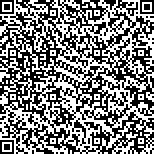附件
|
| 引用本文: | 何勇凤,李昊成,朱永久,杨德国.湖北长湖富营养化状况及时空变化(2012-2013年).湖泊科学,2015,27(5):853-864. DOI:10.18307/2015.0511 |
| HE Yongfeng,LI Haocheng,ZHU Yongjiu,YANG Deguo.Status and spatial-temporal variations of eutrophication in Lake Changhu, Hubei Province. J. Lake Sci.2015,27(5):853-864. DOI:10.18307/2015.0511 |
|
| |
|
|
| 本文已被:浏览 10060次 下载 4843次 |

码上扫一扫! |
|
|
| 湖北长湖富营养化状况及时空变化(2012-2013年) |
|
何勇凤, 李昊成, 朱永久, 杨德国
|
|
中国水产科学研究院长江水产研究所, 农业部淡水生物多样性保护重点实验室, 武汉 430223
|
|
| 摘要: |
| 为评估长湖水体富营养化程度,2012-2013年分4个季度对全湖区20个采样点的物理、化学和生物要素进行监测,在评价水质现状的基础上采用综合营养状况指数法和浮游植物细胞丰度指数法综合评价水体营养状况,并应用典型相关分析(CCA)方法揭示水体富营养化状况与湖泊理化要素之间的典型相关性. 结果显示:4个季节长湖全湖区的水质均处于地表水IV类~劣V类水标准;综合营养状态指数值在49.54~82.55之间,浮游植物细胞丰度在2.88×106~61.73×106 cells/L之间,均显示其处于富营养化状态;长湖富营养化状况的分布呈现一定的时空差异性;CCA分析显示,长湖理化要素变量可解释68.6%的水体富营养化状况变量的变异,影响其富营养化状况的主要理化因素有水体总磷、总氮、溶解氧、亚硝态氮、硝态氮浓度,水深和沉积物总磷、总氮含量. 长湖水体富营养化主要是由于外源的磷污染,其次是氮污染,富营养化最严重的夏、秋季浮游植物的生长主要受氮营养限制,而冬、春季则部分受磷营养限制,部分属于过渡类型. 因此,建议大力削减围网/围栏养殖量,同时考虑结合水生植物栽种等生态工程建设措施以降低长湖水体发生严重富营养化的风险,并进一步改善长湖的水质现状. |
| 关键词: 长湖 富营养化 时空变化 典型相关分析 综合营养状态指数法 |
| DOI:10.18307/2015.0511 |
| 分类号: |
| 基金项目:国家科技支撑计划项目(2012BAD25B08-03)资助. |
|
| Status and spatial-temporal variations of eutrophication in Lake Changhu, Hubei Province |
|
HE Yongfeng, LI Haocheng, ZHU Yongjiu, YANG Deguo
|
|
Key Laboratory of Freshwater Biodiversity Conservation, Ministry of Agriculture of China, Yangtze River Fisheries Research Institute, Chinese Academy of Fishery Sciences, Wuhan 430223, P. R. China
|
| Abstract: |
| In order to assess the water eutrophication status of Lake Changhu, 20 sampling sites with physical, chemical and biological elements of lake were monitored seasonally during 2012-2013. On the basis of evaluated water quality by single-factor water quality assessment method, two other methods(phytoplankton cell abundance index method and comprehensive trophic level index(TLI) method) were chosen to assess water eutrophication status of Lake Changhu. Then canonical correlation analysis(CCA) was used to demonstrate the canonical relationships between variables of "water eutrophication status" and variables of "physical/chemical elements of lake". The results indicated that water quality of Lake Changhu in four seasons conformed to the standard of type IV to bad V surface waters. TLI values ranged from 49.54 to 82.55, and phytoplankton cell density varied from 2.88×106 cells/L to 61.73×106 cells/L, both of which exhibited the state of eutrophication of Lake Changhu. The water eutrophication of the lake was characterized by significant spatial-temporal variations. The CCA revealed that variables of "physical/chemical indices of lake" could explain 68.6% of the variations of the variables of "water eutrophication status", and the main factors affecting eutrophication of Lake Changhu were total phosphorus, total nitrogen, nitrite-nitrogen and nitrate-nitrogen of water, total phosphorus and total nitrogen of sediment, dissolved oxygen, water depth. Water eutrophication in Lake Changhu was mainly from the pollution of external phosphorus, followed by external nitrogen. In summer and autumn, eutrophication was the worst, and the growth of phytoplankton was mainly influenced by nitrogen limitation. However, in winter and spring, eutrophication could be limited by phosphorus and transitional type. Therefore, we suggest that slashing enclosure culture in the lake, together with transplanting aquatic plants and other measures of ecological engineering, should be carried out with great care in order to reduce the risk of severe water eutrophication and to improve water quality in Lake Changhu in the future. |
| Key words: Lake Changhu eutrophication spatial-temporal variations canonical correlation analysis trophic level index |
|
|
|
|